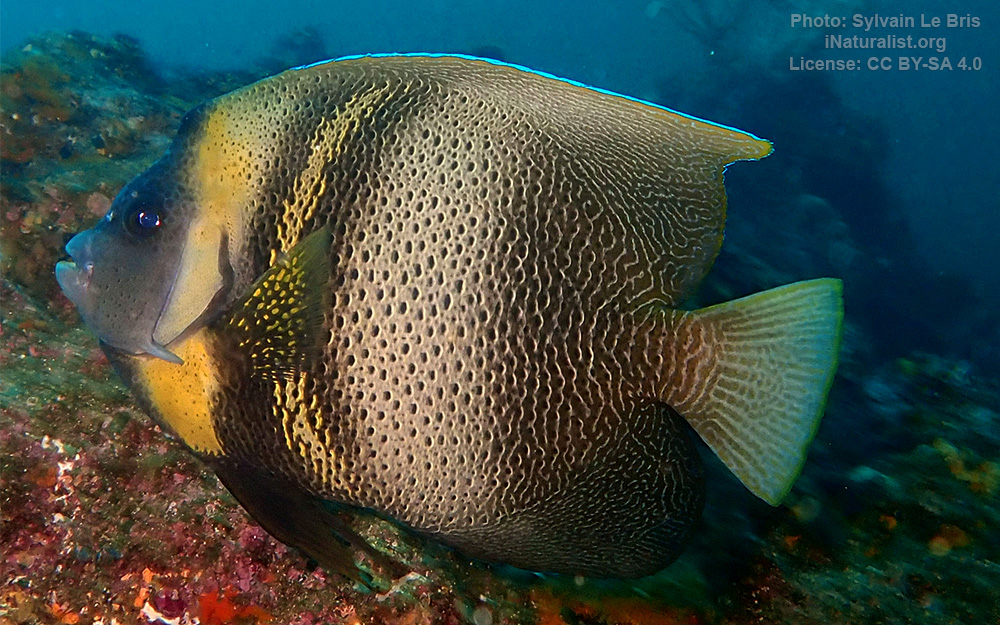Cortez angelfish
(Pomacanthus zonipectus)

Classification
General data
Pomacanthus zonipectus has a deep, compressed body with a short, blunt snout with a small mouth which has numerous small bristle-like teeth. It’s preoperculum has a large spine at its corner and a smooth vertical edge, while the area beneath the eye and the operculum have no spines.
Like other members of the genus Pomacanthus, has juveniles and adults which look quite different.
The adults have the posterior half of the body covered by a matrix of crisscrossing lines, becoming yellowish-green in the tail. There is a large yellow arc to the rear of the pectoral fins and a bright yellow saddle across the nape. There is a pale grey section in the middle of the flanks.
The juveniles have a brownish black background colour broken by 6 vertical vivid yellow bands that start on the face and finish at the caudal peduncle, between the yellow bars there are parallel blue bars. The dorsal and pelvic fins have bright blue margins.
This species can reach a total body length of about 46 cm (18 in).
These angelfishes have 11 spines and 24-25 soft rays in the dorsal fin and 3 spines and 20-22 soft rays in the anal fin.[3]
Pomacanthus zonipectus occurs in the eastern Pacific Ocean from Puerto Peñasco, in the northern Gulf of California of Mexico south to Peru. It has been recorded as a vagrant from southern California, the Galapagos Islands, Cocos Island and Malpelo Island, although it has not been reported from Clipperton Island.











